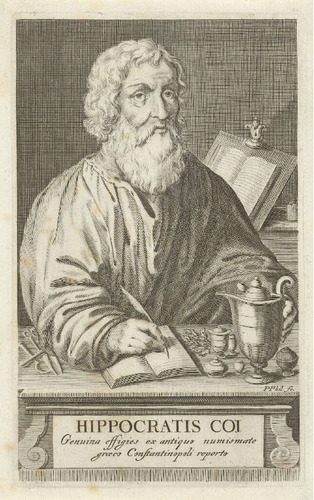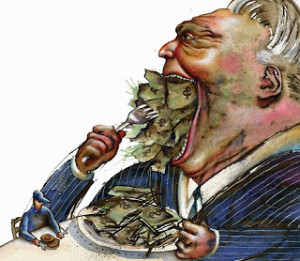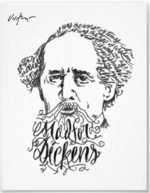First, Do No Harm

Hippocrates by Pieter Philippe (1635-1702). Rijks Museum.
Today’s title is the opening line of the oath written about twenty-four hundred years ago by Hippocrates, the pioneer of modern medicine. He’s the author of over seventy books on medicine, most notably the patient’s treatment, not just the disorder but in tandem with the patient because they were inextricably linked in his mind.
I have chosen this subject because of a couple of encounters with ‘factory healthcare.’
The most neglected part of factory medicine or the business of healthcare is not the patient but the family. It’s not intentional, but like everything in life, we can only attend to a couple of things at a time. It’s also expensive to be nice non-participants; I mean people who do not enable the business financially.
We’re easily distracted, sidetracked, especially when greed enters the equation. Avarice seems to subordinate all other considerations in every business. Treating people well always loses to financial expediency.
The factory concept entered the treatment of infirmities when physicians and other medical practitioners realized that ‘there’s GOLD in them thar ills’.
Ok, it’s a lousy paronomasia.
It probably dawned on some MBA that streamlining healthcare practices would significantly increase profits. So wellness fell victim to greed, and medicine became a business.
Henry Ford, an American industrialist, pioneered the ‘assembly-line’ revolutionizing the factory production environment. It is the process by which nearly everything is manufactured worldwide. I say almost since a few bespoke craftspeople insist on a personal touch.
The assembly line process or system builds everything as it moves through a succession of workers. Each adds something or performs a limited number of tasks as the item moves efficiently from station to station.
In Ford’s early business, it took a crew half a day to build an automobile, but his innovation of the assembly line decreased that time to 93 minutes, increasing output and subsequent profits – Massive profits.
Everything we have or do is a result of this industrial advancement.
Yes, everything from breakfast in a restaurant to the computer I use to write these articles, including the topic of this article, Factory Healthcare, owes its profits to the advent of Ford’s assembly line and industrialization processes.
Sure, there are efficiencies in this process, that’s the idea, but every efficiency has a corresponding cost. It may lower the manufacturing cost and increase output, but the pride in individual contribution and personalization is lost. In healthcare’s case, the loss is in the personal touch – especially where the family, a.k.a. loved ones, are concerned.
A few months ago My wife required minor surgery to repair a torn rotator cuff. The process is now outpatient surgery – no hospital stay. Here’s how it works.
* Precheck-in – How will you pay?
* Patient check-in
* Patient prep
* Anesthesia
* Surgery
* Recovery
* Postoperative instructions
* Release
Oh, the cost – $96,000 for five hours, start to finish – or $19,200 an hour billed to the insurance company. Less than ninety minutes of this was actual surgery.
I received FIVE generic and impersonal text messages throughout this entire five-hour process. No personal contact! TEXT messages…
Please note ‘billed‘ to the insurance company. Insurance companies pay a negotiated or allowed amount, not the ‘billed’ amount sent to the patient. Only unlucky customers pay the total cost. Read on…
The medical facility, practice, or doctor negotiates an allowed amount with the insurance company. So the bill I see for $96,000 is not what the insurance company pays the facility. This payment depends on the physician’s status as in-network (a member of the insurance carriers program) or out of network (the physician does not accept this negotiated settlement). If the physician is ‘out of network,’ the insured – patient – is responsible for the difference between the negotiated and billed amounts.
 Do you recall the last time you took your car to the mechanic? Isn’t this the precise process, except for the anesthesia – which you’ll need before receiving the bill.
Do you recall the last time you took your car to the mechanic? Isn’t this the precise process, except for the anesthesia – which you’ll need before receiving the bill.
* Precheck-in – How will you pay?
* Patient check-in
* Patient prep
* Surgery
* Recovery
* Postoperative instructions
* Anesthesia – to lessen the pain of payment
* Release
It’s an assembly line with the same impersonal care and attention. You are like your car, a defective unit needing repair or adjustment.
These outpatient clinics or surgery centers are nothing more than a shop to process defective people. You’re plopped in a chair or on a gurney and wheeled through the process from admitting through release, afforded the same care as a defective car in the repair shop. It’s competent and often expert, but not at all personal.
Welcome to factory healthcare.
The Doctor’s Office visit is another endearing product of the profit-driven factory mentality in the industrialized business of healthcare.
How much time did you spend with your family physician during your last visit?
 Timing for the average doctor visit is between 13 and 24 minutes, and most are less than 15-minutes. The number of patients per day averages 20. The panel size or the number of patients a doctor’s practice can manage effectively is 2,000 annually. Is there any wonder that scheduling an appointment is difficult and the personal time with your caregiver/technician is limited to a brief encounter? You expected a call back with the results? Seriously? The staff necessary to perform that unprofitable activity is not cost-effective. You need to call and leave a message if you want to know.
Timing for the average doctor visit is between 13 and 24 minutes, and most are less than 15-minutes. The number of patients per day averages 20. The panel size or the number of patients a doctor’s practice can manage effectively is 2,000 annually. Is there any wonder that scheduling an appointment is difficult and the personal time with your caregiver/technician is limited to a brief encounter? You expected a call back with the results? Seriously? The staff necessary to perform that unprofitable activity is not cost-effective. You need to call and leave a message if you want to know.
In the factory setting, it’s called ‘throughput.’ Lowering the time with each patient increases the throughput and, therefore, profit.
The modern medical practice is a business, just like everything else in America. They exist to make money, and if, in the process, they can mend a few defective units, all the better. This statement sounds quite cynical, but considering most practitioners’ quality and level of care, it seems perfectly reasonable to me.
There are more analogies in the business of healthcare’s factory environment, like medical codes – numbers used by the insurance companies and the service providers (doctors) that describe the procedure are an excellent simile. Everything from an exam to brain surgery has a corresponding number and an associated, authorized parts kit – just like your automobile mechanic.
The next time you visit your auto-tech, ask to see the ‘Flat-Rate‘ manual. It lists codes and payments for automobile repairs and the associated parts kit. It tells the technician how much time is allowed for the repair and the related cost. Their incentive is to ‘beat’ the flat rate or work as quickly and efficiently as possible and use the appropriate professional shortcuts.
The billing process is computerized, so the technician enters the code, and their system calculates your bill, just like the medical businesses. And, you pay the ‘flat rate’ or acceptable amount for the work. If the mechanic beats the flat rate, they keep the surplus. This part of the business is ‘behind the curtain,’ so you don’t see it.
The ‘Flat-Rate‘ manual was the concept behind the CMS (Center for Medicare Studies) medical coding system.
When your doctor performs the service, their staff ‘codes’ your visit and sends it to the insurance companies ‘claims department,’ who then decides if the services performed are necessary, authorized, correctly coded, justified, and payable to the practice.
If denied, you, the insured, are responsible for the claim or difference between the allowed and billed amount. Any discrepancy, adjudication, or justification is the patient’s problem. You’re allowed two, possibly three, appeals to the insurance provider should you disagree.
 About fifteen years ago, I had, enjoyed a quadruple bypass. That bill exceeded $550,000. I made the mistake of driving to the hospital emergency room rather than using an ambulance service. It was obviously not an emergency in the insurance company’s eyes since I could still drive.
About fifteen years ago, I had, enjoyed a quadruple bypass. That bill exceeded $550,000. I made the mistake of driving to the hospital emergency room rather than using an ambulance service. It was obviously not an emergency in the insurance company’s eyes since I could still drive.
The insurance company maintained had I called and requested an ‘in network’ facility, and if this had been a valid emergency, they would have paid up to the billed amount. However, since I circumvented their process, I was responsible for the difference – it was not an emergency because I made my way to the ‘out of network’ facility.
It took two years of arguments and appeals.
I lost.
The result was personal bankruptcy (chapter 13) to cover ‘our’ portion of the denied costs.
How much did it cost us?
Just under $135,000.
That’s what I get for surviving a heart attack.
My story is one of the thousands created by this factory mentality and the absolute obstinacy of the healthcare business.
The immeasurable stress created by the systems’ intransigence is incalculable. Imagine dealing with this news while recovering from this trauma. Imagine the stress it caused for my family. Dealing with the insurance company, the attorneys, courts, appearances, filings, depositions, and all the associated stresses those situations generate.
It is not necessarily conducive to rapid recovery.
Oh, by the way, my recovery was curtailed so that I could maintain a full-time job throughout the process.
After all, someone had to pay those bills.
Sadly, this problem is pervasive throughout our society and every business as people cheat the system, and the system cheats the people.
You have to consider the costs of treating the uninsured, indigent, homeless, illegal aliens, and deadbeats; that money needs to come from somewhere. Someone has to pay.
You know it will never be the business of healthcare…
Government help? Yes, of course… Our deficit = $141 TRILLION and climbing…
Oh, well… It’s just business.
But – Do no harm…
April 12, 2022
~ The Author ~
 Charles R. Dickens was born in 1951, is a veteran of the Vietnam war, for which he volunteered, and the great-great grandson of the noted author, whose name he shares.
Charles R. Dickens was born in 1951, is a veteran of the Vietnam war, for which he volunteered, and the great-great grandson of the noted author, whose name he shares.
He is a fiercely proud American, who still believes this is the greatest country on the planet, with which we’ve lost control and certainly our direction. He grew up in moderate financial surrounding; were not rich by any stretch, but didn’t go hungry – his incredibly hard working father saw to that. As most from that era, he learned about life from his father, whose story would take too long to tell, other than to say that, he is also a fiercely proud American; a WWII and Korean war, veteran Marine.
Charlie was educated in the parochial system which, demanded that you actually learn something, and have capability to retain it before you advance. He attended several universities in pursuit of a bachelor’s degree, and chased the goose further to a master’s, and has retained some very definite ideas about education in this country.
In addition, Charlie is a retired blues guitar and vocalist – a musician. This was his therapy career. Nothing brings him as much joy as playing music, and he wishes that he could make a living at it… but alas… life goes on!
That’s Charlie… a proud, opinionated, and passionate American.
